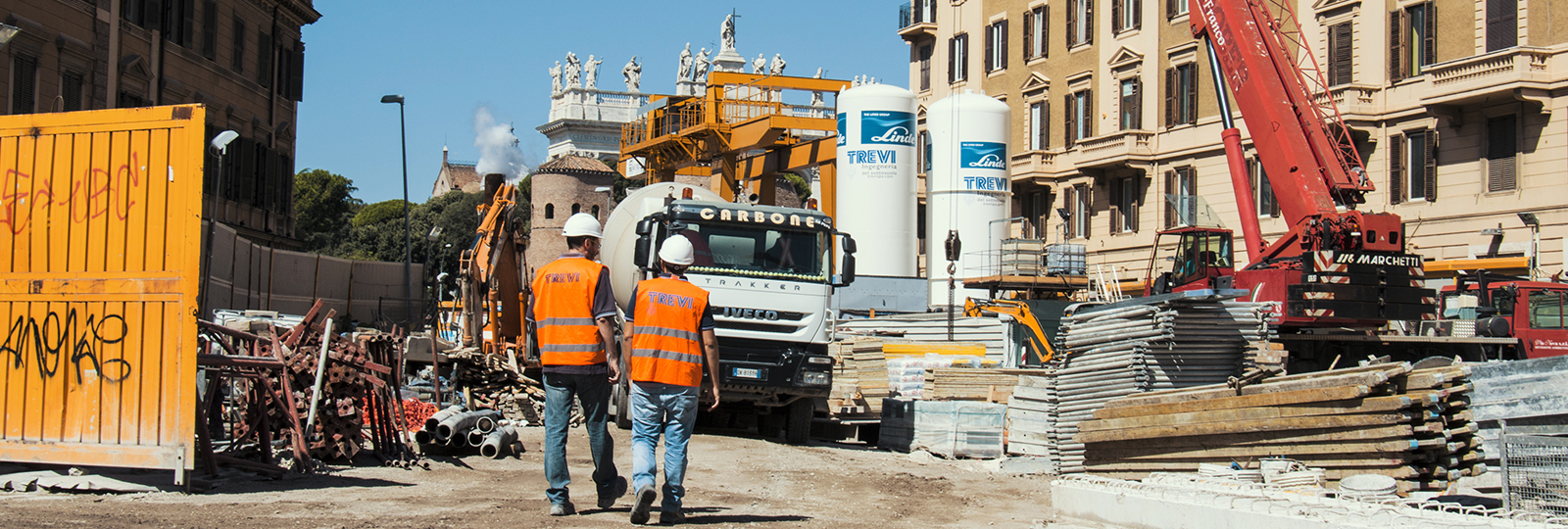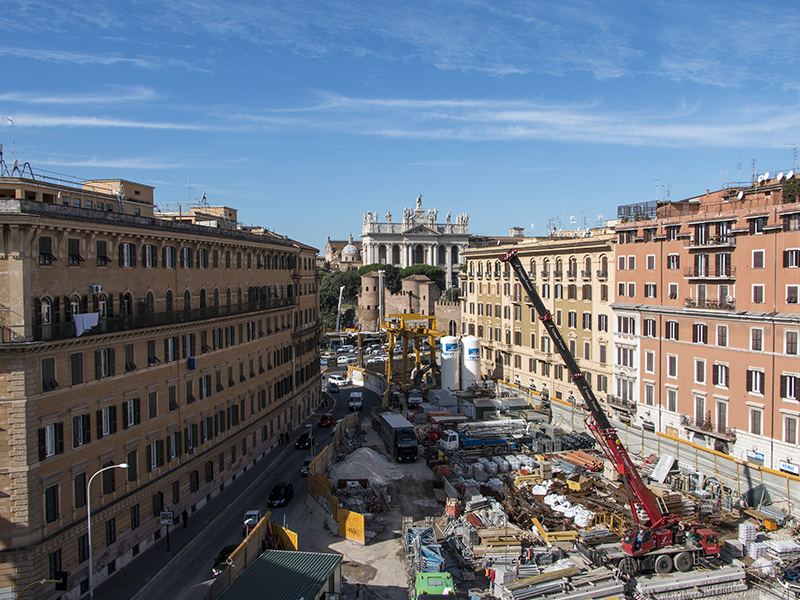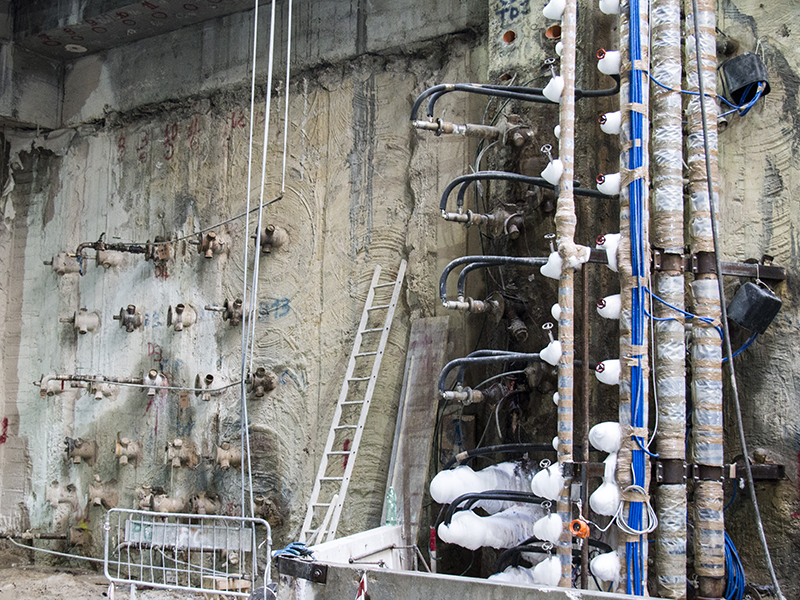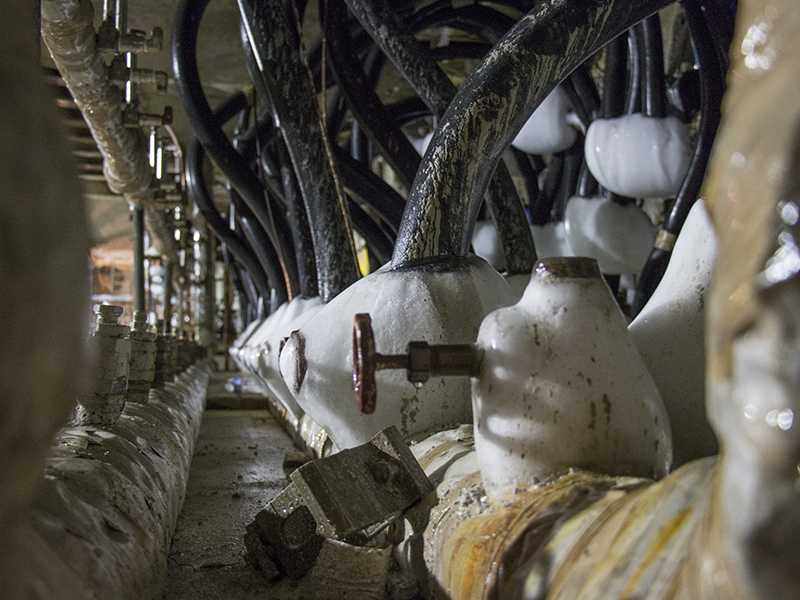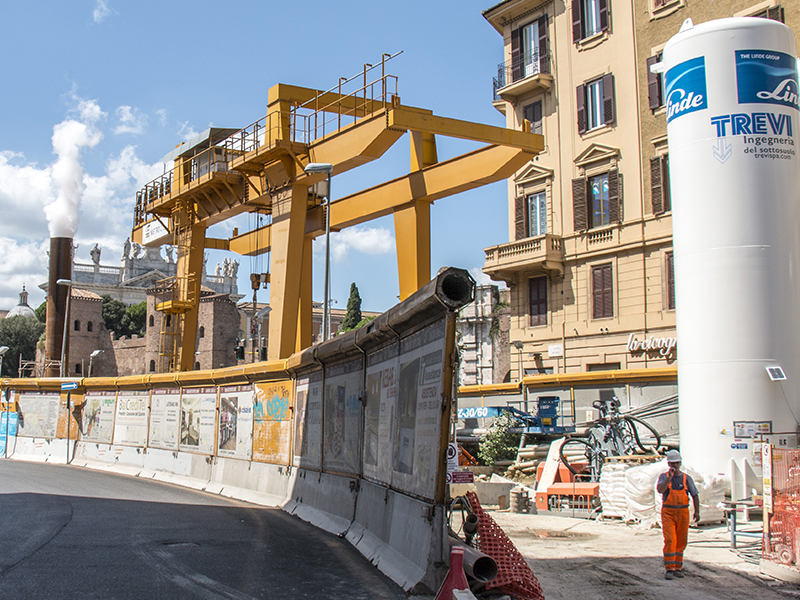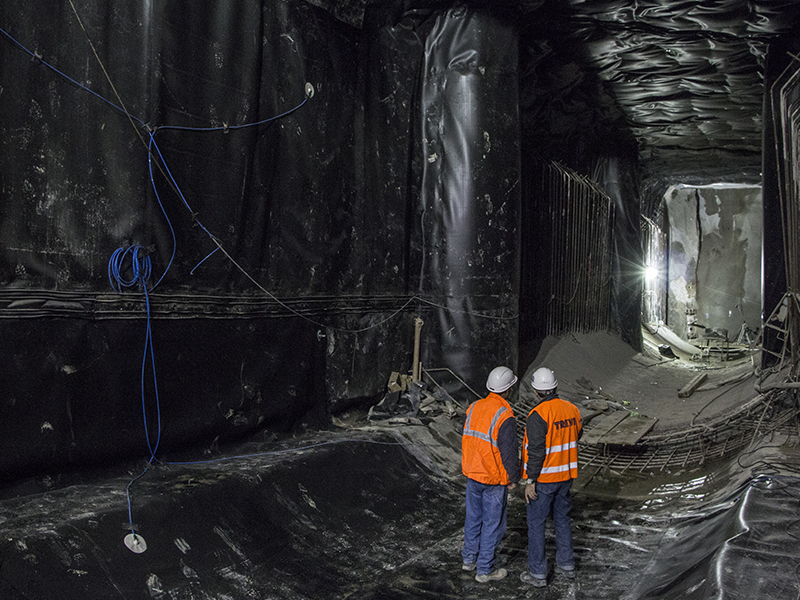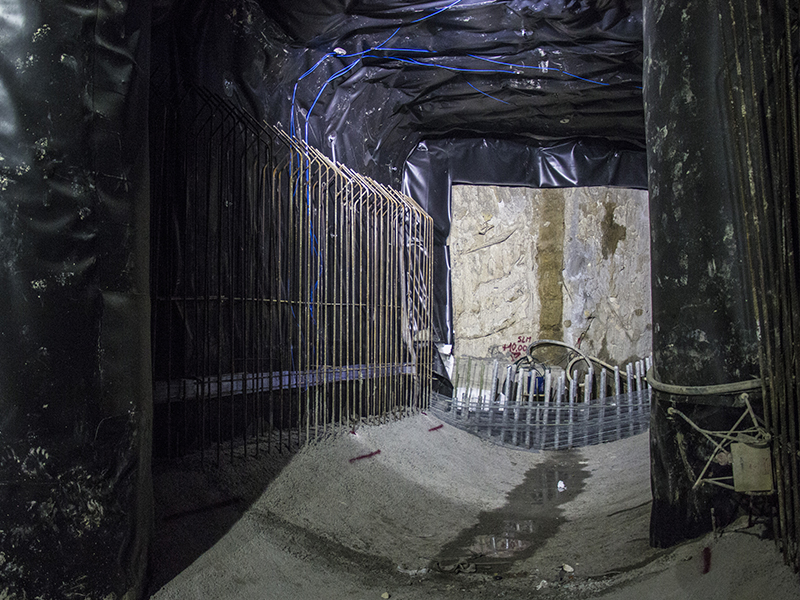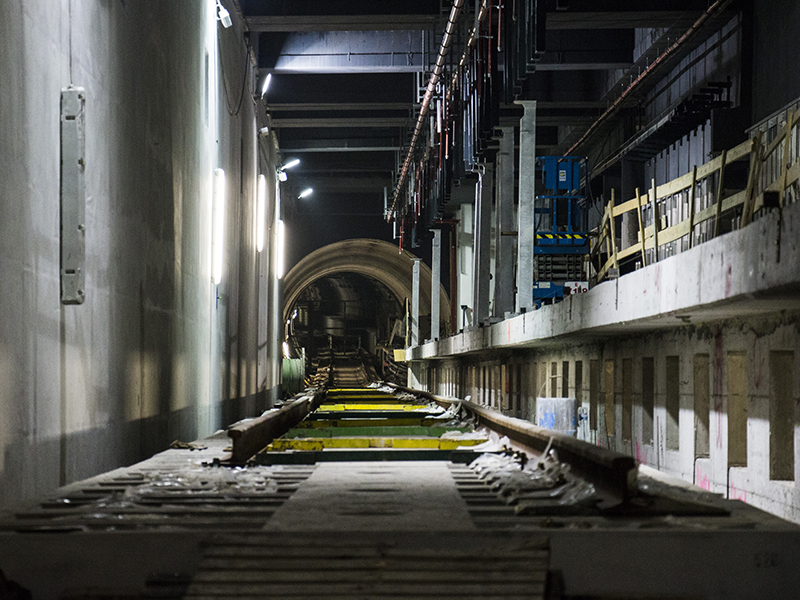Rome | Italy
The new metro line “C” entails the construction and rehabilitation of 24 stations and 21,5 km of metro line, 13 of which carried out underground; the new metro line will improve the transportation system of a congested city such as Rome.
The new line “C” of San Giovanni metro station has been constructed adjacent to the existing line “A” of San Giovanni station; the new metro line “C” is deeper than line “A” and underpasses the existing station. The underpass project envisaged an Artificial Ground Freezing in order to excavate two new tunnels, while keeping trains running in the safest possible condition.
In order to allow trains to regularly run to and from the existing station’s line “A”, a temporary structure for rail support, during excavation of the under-crossing tunnels, was installed and a realtime monitoring system was devised in order to control both soil temperature during freezing activities and the existing station’s behavior. The excavation of tunnels under the water table, with a hydraulic head of over 10 m in not homogeneous soils having different mechanical properties and permeability and below existing sensitive structures, involves special ground freezing sequences and methods, as well as peculiar drilling systems and operations, such as TDDT (Trevi Directional Drilling Technology).
| Owner | ROME MUNICIPALITY - ROMA CAPITALE |
| General Contractor | METRO C s.c.p.a. |
| Duration of works | 2014 - 2016 |
During the construction of the new Line “C”, many problems had to be solved in order to preserve the priceless heritage resources encountered underground. Some important archaeological remains, brought to light during the construction of the New San Giovanni Station, made it necessary to change the original project. The station was built at a depth of 30 meters; diaphragm walls were excavated down to a depth of 55 meters until the impermeable layer of Pliocene clays was reached. Moreover, two traditional tunnels were excavated beneath Line “A”’s existing station by means of special consolidation techniques.
In order to allow trains to regularly run to and from the existing station’s line “A”, temporary structures for rail support were installed next to Line A’s platform level. Said structures (steel bridges founded on micropiles) will operate during the excavation of undercrossing tunnels. Moreover, a suitable structural monitoring system was devised.
Consolidation and impermeabilization of both excavated tunnels was achieved via the Artificial Ground Freezing process. This method is employed for excavations in difficult conditions below the ground water level in the presence of loose soil or fractured rocks. The Freezing Method is the best choice whenever works are carried out in sensitive urban areas, in order to ensure the greatest possible safety degree as far as both workers and existing surface structures are concerned.




